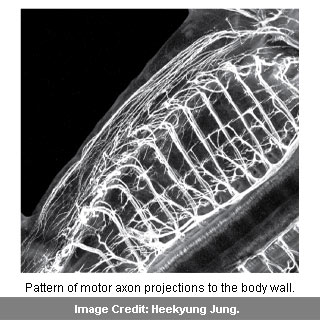
This ‘master organizer’ a member of the Hox family of genes is seemingly known for regulating the overall pattern of body development. Hox genes are believed to cause a cascade of gene expression in the early embryo. It is with this cascade that these genes can possibly allow the creation of an animal’s overall structure and body part orientation.
“We knew that there were 21 Hox genes that determine how connections are made between motor neurons in the spinal cord and muscles in the limbs. But what was surprising to us in this study was that a single Hox gene acts as a global organizer of motor neurons and their connections. The next step will be to see how Hoxc9 in motor neurons affect motor behaviors such as walking and breathing,” remarked Jeremy S. Dasen, PhD, an associate professor in the Departments of Physiology and Neuroscience at NYU Langone Medical Center and a Howard Hughes Medical Institute Early Career Scientist.
These genes first observed in fruit flies have displayed Hox activity in mammals. It is known that humans include 39 such genes and 21 have been found to coordinate as motor neurons in the spinal cord. In order to control the variety of muscle cells used to coordinate movement, innumerable amounts of motor neurons are apparently required in mammals. Accuracy of function performance may depend upon every single neuron present in the embryo finding its way from the spinal cord to the group of muscles that it is equipped to regulate.
Dr. Dasen remarked, “What we are trying to understand is how the nervous system is wired to control movements such as breathing and walking and see how genetic programs can further control these circuits in terms of exploring this paradigm as a way at looking at the vital circuits of the body.”
The investigators are undertaking experiments to identify the blueprint for this motor neuron diversity. During the research, investigators tested mice with a mutation in Hoxc9 gene. The scientists scrutinized molecular markers differentiating between motor neurons in the limb and thoracic area. As a result, the researchers found mutation of Hoxc9 transformed the thoracic motor neurons into limb motor neurons. While conducting a series of biochemical experiments it was noticed that Hoxc9 orchestrates gene expression in motor neurons by repressing the Hox genes that are vital for limb coordination.
The research was published in the September 9, 2010, issue of Neuron.
